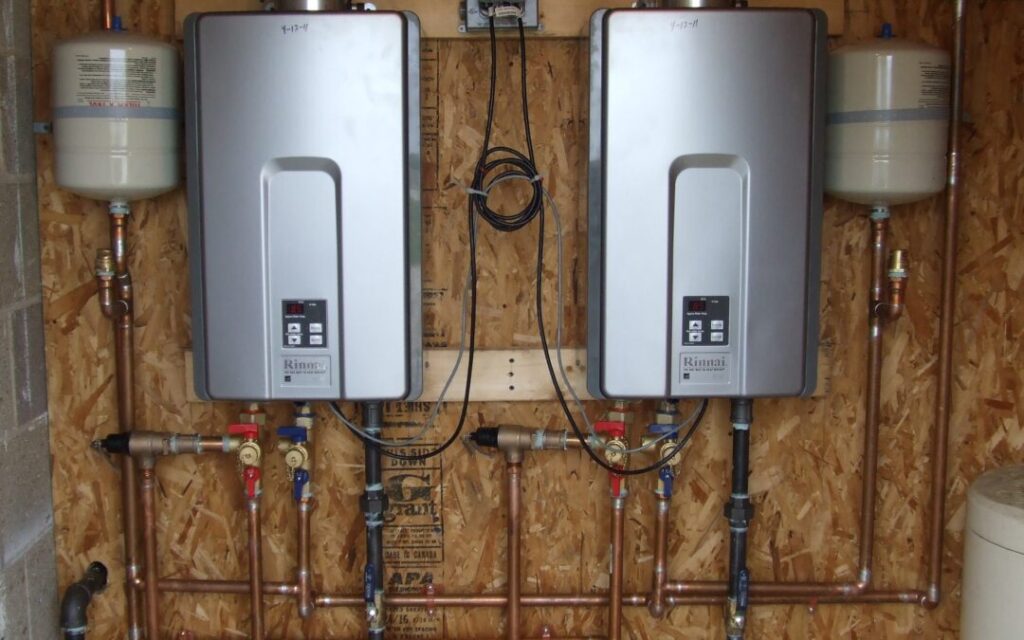How Does a Tankless Water Heater Work?

Tankless water heater systems are becoming more and more popular. More and more people are looking for energy savings that tankless water heaters can provide, but some people are reluctant to make the change to one because they don’t know how they work. There are a number of factors to consider when looking at making the switch to a tankless water heater.
Tankless Water Heater Basics
Instead of containing hot water in a large tank, a tankless water heater remains turned off until the hot water is needed. Once hot water is needed, like for a warm shower or for hot water from a faucet, the tankless system ignites. The water is heated directly as it passes over an exchanger, and sent to where it is used. The main benefit of this is that the tankless unit is turned off until the hot water is needed. In a conventional tanked water heater, the hot water is continuously held and heated.
Because the water is continuously circulated, there’s no running out of hot water. The tankless water heater will continue to heat the water as long as there is demand for it. Once that hot water is turned off, so is the tankless water heater. That means energy savings along with no longer having to worry if you’re going to run out of hot water.
Different Kinds of Tankless Water Heaters
There are a couple of different kinds of tankless water heaters, but they can fit pretty much any needs. The first, and most common, is the whole-house tankless water heater. Whole-house units are built to handle the demand of – you guessed it – the whole house. The whole-house unit can handle sending hot water to multiple fixtures at one time. Depending on how much hot water you need will determine how high of a flow rate you’ll need from the tankless water heater.
Point-of-use tankless water heaters are a much smaller option, and will usually be placed in a closet or in the cabinet underneath a sink. Because of their size, this type of tankless water heater is generally used for a single shower or faucet. They’re not as expensive as the larger whole-house units, but are generally used to keep hot water flowing to a single appliance.
Deciding on a Tankless Water Heater
There are a number of things to consider when moving to a tankless water heater. Depending on how much hot water your family’s lifestyle demands and the number of appliances you need hot water from are two of the biggest. If you have a number of showers and faucets that use a lot of hot water, getting a whole-house unit is probably the best option.
It’s also important to weigh the cost of upgrading to a tankless water heater to the efficiency and how much your family will use it. There are also outdoor and indoor options, with outdoor tankless water heaters generally being a better fit for existing homes. Indoor tankless water heaters are a good option for new builds, because they can be fit in with the construction.
All of these things should be taken into consideration when contemplating a switch to a tankless water heater. It’s important to know not only how they work, but also how they’ll benefit your specific situation. For more information about tankless water heaters, or if they’re right for you, contact Denver’s water heater experts at NOW Heating & Air.
Now Heating & Air
8661 Rosemary St
Commerce City, CO 80022
Phone 303-287-8000
